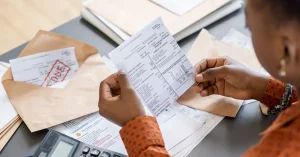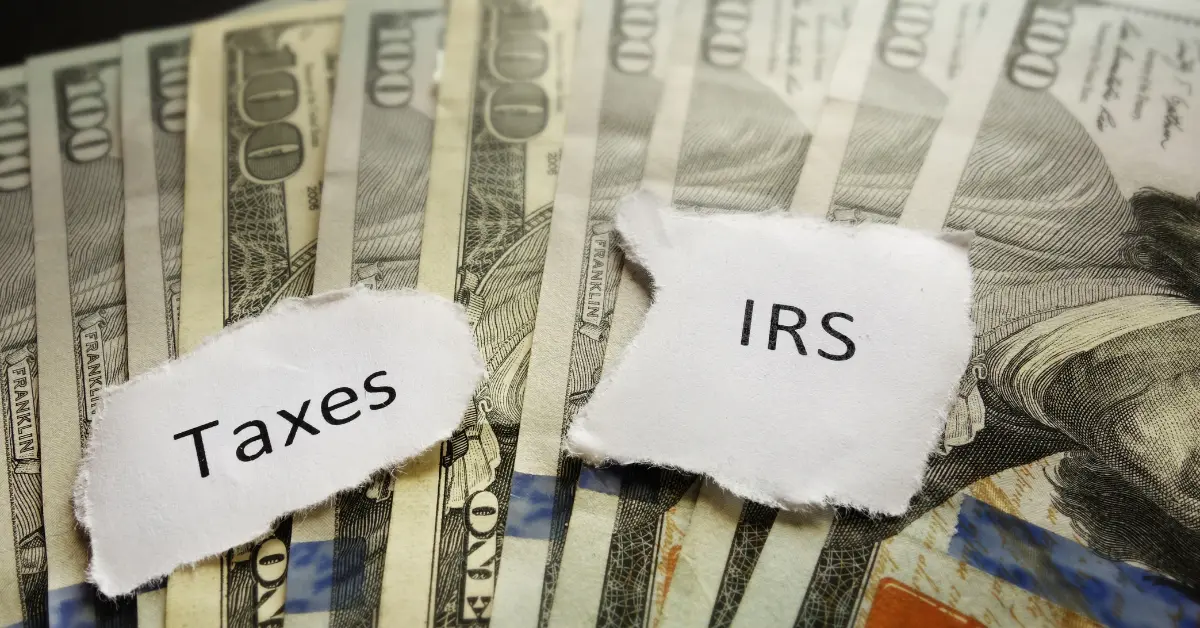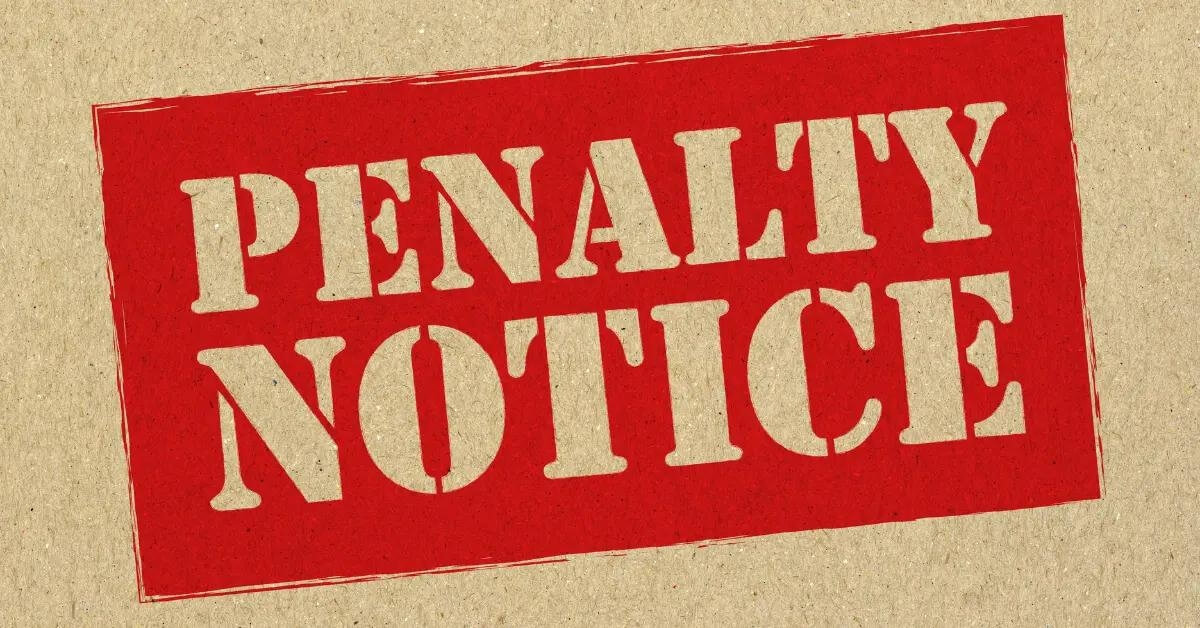Getting hit with a CP504 can feel like a cold splash of water — startling and unwelcome. It’s that moment when you realize the IRS means business about unpaid taxes.
But before panic sets in, take heart; there are steps you can take to navigate through this stormy situation. In extreme cases, failing to respond appropriately to a CP504 could even lead to an IRS investigation.
Whether it’s your first time dealing with tax notices or not, understanding what a CP504 entails is crucial for anyone looking to keep their finances on track.
Key Takeaways:
- CP504 is a serious notice from the IRS, serving as a final warning before they start seizing assets to cover unpaid taxes.
- Ignoring a CP504 can lead to tax liens, levies on bank accounts and assets, passport restrictions, and escalated collection actions.
- Upon receiving a CP504, review for accuracy, contact the IRS promptly, and explore payment options like installment agreements.
- Options for resolving tax debt include Currently Not Collectible status, Offer in Compromise, penalty abatement, and innocent spouse relief.
- Avoid future CP504 notices by filing and paying taxes on time, responding to IRS notices promptly, and keeping contact information updated.
What is IRS Notice CP504?
If you’ve received an IRS Notice CP504, it’s time to pay attention. This isn’t just another piece of mail from the IRS – it’s a serious notice that requires immediate action.
The CP504 is essentially a final warning shot from the IRS. It means they’ve been trying to collect on your unpaid balance for a while now, and they’re done playing nice.
Explanation of CP504 notice
The CP504 Notice is the IRS’s way of saying, “Hey, we’ve been trying to get your attention about this tax debt. You haven’t paid up, so now we’re getting serious.”
It’s officially called a Notice of Intent to Levy, and it’s issued under Section 6331(d) of the Internal Revenue Code. In plain English, that means the IRS is giving you a heads-up that they’re about to start seizing your assets to cover what you owe.
Purpose of CP504 notice
The purpose of the CP504 is to light a fire under you to take action on your delinquent tax debt. The IRS is required by law to give you this 30-day notice before they start levying your property.
It’s their way of saying, “Last chance, buddy. Pay up or we’re coming for your stuff.” They’re hoping the threat of losing your assets will motivate you to settle your debt pronto.
Contents of CP504 notice
The CP504 notice isn’t just a vague threat. It’s packed with important info you need to know. As laid out in Section 6331(d)(4), the notice must include:
- The amount of your unpaid tax debt
- A demand for immediate payment
- A warning that the IRS intends to levy your property
- An explanation of your right to request a Collection Due Process hearing
Basically, the CP504 breaks down exactly how much trouble you’re in and what you need to do to get out of it. It’s not messing around – this notice means business.
Consequences of Ignoring CP504 Notice
Think you can just toss that CP504 notice in the trash and forget about it? Think again. Ignoring a CP504 is like playing chicken with a freight train – it’s not going to end well for you.
If you don’t take action after receiving a CP504, the IRS is going to come for your assets. And believe me, they’re not choosy at all. They’ll seize just about anything of value to settle your tax debt.
Tax liens
One of the first things the IRS will do is slap a federal tax lien on your property. This is a public record that lets all your creditors know the IRS has dibs on your assets.
A tax lien can throw a wrench in your financial plans, turning what should be smooth sailing into rough waters. It’ll tank your credit score, making it tough to get loans or lines of credit. And if you try to sell any property with a lien on it, the IRS gets the first crack at the proceeds.
Levies on bank accounts and assets
If a lien doesn’t get your attention, the IRS will start seizing your assets outright. They can levy your bank accounts, draining your funds to pay off your debt. They can also chase after your paycheck, dip into your Social Security funds, and even target your nest egg for retirement.
But it doesn’t stop there. The IRS can seize and sell off your assets too, like your car, boat, or real estate. They can even come after your business assets and accounts receivable.
Passport restrictions
Ignoring a CP504 can even affect your ability to travel. The IRS can certify your seriously delinquent tax debt to the State Department, which will then deny, revoke, or limit your passport until you’ve resolved your debt.
So if you had any international travel plans, you might need to put those on hold until you’ve dealt with your tax problem. The IRS has effectively grounded you until you pay up.
Escalation to more severe collection actions
If you still don’t pay after a levy or lien, the IRS will ramp up their collection efforts. They can summon you or third parties to provide information about your finances and assets. They can even pursue criminal charges if they believe you’re actively evading taxes.
The bottom line is, that ignoring a CP504 notice will only make your tax problems worse. The IRS has a lot of tools at its disposal to collect what you owe, and they’re not afraid to use them. The longer you wait to take action, the more severe the consequences will be.
Steps to Take After Receiving CP504 Notice
Alright, so you’ve gotten a CP504 notice and you’re officially freaking out. Take a deep breath – it’s going to be okay. You have options for dealing with this, but you need to act fast.
Here are the steps you need to take as soon as that CP504 lands in your mailbox:
Review notice for accuracy
First things first – make sure the information on the CP504 is correct. The IRS isn’t perfect, and sometimes they make mistakes. Double-check that the amount they say you owe matches your records.
You can see a sample CP504 notice here to get an idea of what to look for.
Contact the IRS
If everything on the notice looks good, it’s time to reach out to the IRS. The CP504 will include a toll-free number for you to call – do it as soon as possible.
When you get a representative on the line, calmly explain your situation and ask about your payment options. The sooner you open up a dialogue, the more likely you are to find a resolution.
Set up a payment plan
If you can’t afford to pay your tax debt in full, don’t panic. The IRS is usually willing to work with you to set up a payment plan called an installment agreement.
This allows you to break your balance into smaller monthly payments over time. As long as you keep up with the payments, the IRS will hold off on any collection actions.
Request an installment agreement
To request an installment agreement, you’ll need to fill out Form 9465 or apply online through the Online Payment Agreement tool.
There are a few different types of agreements, depending on how much you owe and how quickly you can pay. Your tax pro can help you figure out which one is right for you.
Pay the balance in full
Of course, the best way to get the IRS off your back is to just pay your tax debt in full. If you have the funds available, you can pay your balance online, by phone, or by mail.
If you’re mailing a check, be sure to write your Social Security number or Employer Identification Number on the memo line, along with the tax year and form number you’re paying for. And always send it by certified mail so you have proof they received it.
The most important thing is to take action quickly after receiving a CP504 notice. The longer you wait, the fewer options you’ll have for resolving your tax debt. But if you face it head-on and work with the IRS, you can get through this tough spot and come out the other side.
Options for Resolving Tax Debt
If you’re unable to pay your tax debt in full, don’t panic. You’ve got options.
The IRS offers several programs designed to help taxpayers get back on track. Let’s take a look at a few of the most popular ones.
Currently Not Collectible Status
If you’re experiencing financial hardship and can barely make ends meet, you may qualify for Currently Not Collectible (CNC) status. This puts a temporary hold on collection actions while you get back on your feet.
To be eligible, you’ll need to provide proof of your financial situation, such as income statements and living expenses. If approved, the IRS will periodically review your status to see if your financial situation has improved.
Offer in Compromise
An Offer in Compromise (OIC) allows you to settle your tax debt for less than the full amount owed. It’s not an easy process, but it can be a lifeline for those who qualify.
To get considered, you’ve got to show that forking over your full tax bill would put you in a financial pinch. When the IRS decides if you’re eligible, they’re going to take a close look at how much money you make and spend, what kind of assets you have tucked away, and whether or not your wallet can handle what they’re asking from you.
Penalty Abatement
If you’ve been hit with penalties on top of your tax debt, you may be able to have them removed through penalty abatement. This can significantly reduce your overall balance owed.
Reasons for abatement include reasonable cause, such as a serious illness or natural disaster, or a lack of knowledge about tax laws. It’s worth exploring if you believe your penalties are unjustified.
Innocent Spouse Relief
In some cases, one spouse may be held liable for the other’s tax debts. If you believe you’ve been unfairly saddled with your partner’s tax burden, you may qualify for innocent spouse relief.
To be eligible, you must prove that you had no knowledge of the tax understatement and that holding you responsible would be unfair. Tackling this might seem like a maze, but trust me, it’s worth the effort when you’re facing such a scenario.
Remember, the key to resolving tax debt is to take action quickly. The longer you wait, the worse the problem becomes. By exploring your options and working with the IRS, you can find a solution that works for your unique situation.
Avoiding Future CP504 Notices
Once you’ve resolved your tax debt, the last thing you want is to find yourself back in the same situation. Prevention is key. Here are some tips to help you avoid future CP504 notices and keep your tax life on track.
File Taxes on Time
One of the easiest ways to avoid tax trouble is to simply file your taxes on time. Mark your calendar, set reminders, and give yourself plenty of time to gather the necessary documents.
If you can’t file by the deadline, make sure to request an extension. Just remember, an extension to file is not an extension to pay. You’ll still need to estimate and pay any taxes owed by the original due date.
Pay Taxes in Full
If you owe taxes, pay them in full and on time. If you can’t pay the full amount, pay as much as you can and contact the IRS to discuss your options.
Ignoring the problem will only make it worse. By being proactive and communicating with the IRS, you can avoid escalating collection actions like those outlined in a CP504 notice.
Respond to IRS Notices Promptly
If you receive a notice from the IRS, don’t ignore it. Read it carefully and respond promptly. Many notices can be resolved quickly and easily, but failing to respond can lead to more aggressive collection actions.
If you’re unsure how to respond, contact a tax professional for guidance.
Keep Contact Information Updated
If you move or change your contact information, make sure to update it with the IRS. This ensures you receive any important notices promptly.
You can update your information by filing Form 8822, Change of Address, with the IRS.
By following these tips and staying on top of your tax obligations, you can avoid the stress and hassle of dealing with CP504 notices in the future. Remember, the IRS is there to help. If you’re struggling, reach out and work with them to find a solution.
Get Professional Tax Help When You Need It
The journey through resolving an IRS issue might seem long and winding at first glance but remember – every step taken is one closer towards peace of mind. Dealing with a CP504 isn’t just about clearing up back taxes; it’s also learning how vital communication and proactive measures are in managing personal finance matters effectively.
So yes, while receiving such notice could initially throw you off balance, armed with the right information and approach, turning things around is entirely within reach. For more information or to work with experienced tax professionals, contact Silver Tax Group today!








